It’s generally agreed that humor is the hardest thing to write. There is no other area of writing less forgiving of error or more readily derided by dissatisfied readers:
It takes a genius to make people laugh.
– Stephen King
And yet comedy is such a useful tool for a writer, no matter what genre you work in. Characters with a sense of humor are more interesting and relatable, and otherwise tiresome exposition is far more palatable when it invites a smile. Nothing lulls a horror readership into a false sense of security like a funny moment. Likewise for writers of crime and detective fiction who need to fix a detail in the reader’s mind without prompting them to inspect it too closely.
There are a number of ways you can use humor to your advantage, but the way you do so depends on where your humor comes from within the story.
Where can humor come from?
Injecting humor into your story requires a point of entry, and such points generally fall into one of three groups.
1. Writing Style / Narration
This is the most direct form of humor. Here the writer attempts comedy in their own voice, as the omniscient narrator of the story. How far you go with this kind of humor depends on the narrator’s ‘presence’ in the narrative. Humor through writing style can be quite subtle whereas more direct humor establishes the narrator as having a personality separate from the narrative. Examples of both styles can be found in Douglas Adams’ novel Dirk Gently’s Holistic Detective Agency:
- Writing Style
The door to Reg’s set of rooms in college was up a winding set of wooden stairs in the corner of Second Court, and was not well lit, or rather it was perfectly well lit when the light was working, but the light was not working, so the door was not well lit and was, furthermore, locked.
In this example, Adams uses wordplay, purposefully over-explaining for humorous effect. This creates a jocular sensibility without specifically acknowledging the description as having come from an entity.
- Narrative Voice
Reg was having difficulty in finding the key from a collection which looked like something that a fit Ninja warrior could hurl through the trunk of a tree.
In this example, Adams forms a concept separate from anything directly happening in the story and from any character’s thoughts or words. The micro-narrative Adams creates around the keys requires the reader to subconsciously accept his presence as a narrator. They are no longer ‘seeing’ details in each scene but understand that an entity is relating these details.
This is not the same as when a story is told by a defined character (see the next category for that) but results in the author-as-narrator taking an active role in the story.
While this is an effective style of humor it is difficult to use sparingly. Once the reader acknowledges the author’s presence they cannot go back to thinking of the narrative as purely descriptive.
Writers such as Douglas Adams, Terry Pratchett and Robert Rankin embrace this as part of their style, however it works best when humor is a key part of the story. The more serious your piece, the less appropriate it is to deliver humor in this way. Constant awareness of the author can lessen a reader’s suspension of disbelief.
2. Characters
Humor can also come from the words and actions of characters. This is the most widely useable type of humor as it doesn’t have to impact on writing style. Everyone from teachers to murderers can exhibit a sense of humor without removing the reader from the story.
There are, however, dangers to this approach. One mistake many authors make is to designate one character as the ‘comic relief’. By putting the character’s intended function before their natural characteristics you run the risk of creating a character who feels inauthentic. Such characters quickly become irritating.
This can be solved by planning ahead and creating character histories. The more you know about a character the more authentic they will feel on the page. Every person has a sense of humor to some degree and so should every character. Write down the kind of thing each character finds funny and you’ll find that humor occurs organically as characters react to the situations in which you place them.
A combination of narrator and character humor is when a story is written as if it’s being told by a character, or is written in first person. Though more versatile than straight narrator humor, this method does not allow as much leeway as using characters in the third person.
Hugh Laurie’s book The Gunseller is narrated by its main character to humorous effect. Though the events of the novel are those of a relatively straight-forward spy story the narrator tells them in a casual, light-hearted manner:
To follow somebody, without them knowing that you’re doing it, is not the doddle they make it seem in films. I’ve had some experience of professional following, and a lot more experience of professional going back to the office and saying ‘we lost him’.
At first the humorous narration makes the character seem charming and professional, able to go about potentially deadly work with a casual humor. As the novel progresses, however, the delivery becomes more and more ill-fitting. As the reader begins to care about the characters and events they no longer identify with the ‘casual’ voice.
Remember that even in comedy, humor is one tool of many. Allow sad moments to be sad and exciting moments to be exciting. Humor is most often found in the recognizable and when writing humor using characters this can come in two forms:
- Personal recognition – Here the reader understands how the characters feel. Moments of humor work because they vocalize thoughts or feelings the reader is having, or knows they would have in a similar situation.
- Character recognition – Here the reader understands that words or actions are consistent with their understanding of a character. Recognizing that words or actions spring from already identified traits is surprisingly pleasing. It makes a reader feel as if they have a deep understanding of the character.
Again character consistency is a must and will do much of the work for you. Establishing why a character behaves in a certain way will open up comedic opportunities throughout your work.
3. Context / Concept
The first chapter of Julian Barnes’ A History of the World in 10 ½ Chapters is a retelling of the story of Noah’s Ark from the point of view of a stowaway wood worm. Though the woodworm cracks a few jokes the story is generally downbeat, with Noah coming off as a tyrant and many of the animals suffering terribly.
Despite the tone and content of this chapter, a consistent underlying humor is established by the odd concept behind it. Logically the reader doesn’t enjoy hearing that Noah mistreated the animals (the same events told by one of his sons would be upsetting) yet the persistent context of the renegade woodworm allows Barnes to easily dip back into humor whenever he wants to.
In Neil Gaiman and Terry Pratchett’s Good Omens, the four horsemen of the apocalypse have regular day jobs true to their mythological purposes. We meet Raven Sable, the embodiment of Famine, in the midst of promoting a new food product:
MEALSTM was CHOWTM with added sugar and fat. The theory was that if you ate enough MEALSTM you would a) get very fat, and b) die of malnutrition.
The paradox delighted Sable.
While the subject matter is relatively grim, the context of Sable’s true nature and the satire of real-world junk food introduce a dark humor. These things are not directly addressed (that would be humor through narration) but are made funny through the reader’s understanding of other information.
This is the subtlest kind of humor but can also be the most satisfying. When a reader identifies humor through context they can feel as if they’ve discovered something, and their goodwill towards the humor increases.
In fact, allowing the reader to discover the humor is key to this method. If you’re too heavy handed pointing out what’s funny you once again become the reader-as-narrator and risk diminishing a reader’s suspension of disbelief.
One way you can avoid this is by having the character note the relevance of context. Of course this only works if the characters are aware of the context but if they are then you can combine the reader’s pleasure of discovery with the humor of character recognition.
Context humor is particularly useful for genres which don’t lend themselves to outright ‘jokes’ as it occurs on a level which doesn’t threaten the tone of a piece. Readers can understand and enjoy the humor lent by an unusual concept or context while still recognizing the tragedy, horror or drama of the event it’s based on.
Dying is easy. Comedy is hard.
– Edmund Kean (on his death bed)
… Unless it works
Humor is subjective and if readers are already enjoying your writing then it’s likely they’ll enjoy your humor. Trust your gut.
While my advice highlights some useful tricks and common pitfalls to different types of humor, the true test is whether it works. If you write something that amuses the reader then congratulations, you’re doing it right.
For more on getting the most from your characters, and avoiding the obnoxious ‘comic relief’, check out our article How many characters should a novel have? Or for advice on reigning in long explanatory paragraphs try Are you killing your book with too much detail and explanation?
The 3 Types Of Humor Your Story NeedsClick To Tweet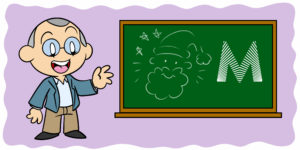
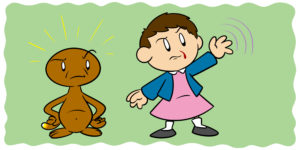
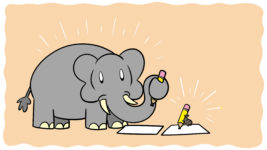
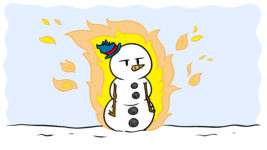
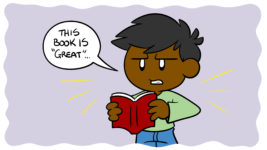
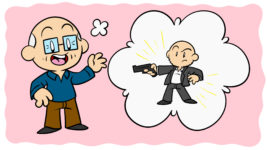
2 thoughts on “The 3 Types Of Humor Your Story Needs”
Can you give a few more examples of context humor, I think I sort of get it, but a couple of examples in how to do it right would help.
Hi Stacey,
Sure thing. One of my favorite examples would be this scene in Butch Cassidy and the Sundance Kid: the titular characters are being chased, and Butch suggests they leap from a cliffside to the surging river below. Sundance refuses, and Butch pushes him until Sundance snaps back ‘I can’t swim!’ Butch bursts out laughing and replies, “What, are you crazy? The fall will probably kill ya.”
In this example, there isn’t really anything funny about the dialogue or characters. Sundance isn’t joking, and we’re not laughing at his inability to swim. Instead, it’s just the context of his worry: the situation is so dire that his worry about what will happen AFTER the thing that’s probably going to kill him anyway becomes ludicrous in context (or that’s the way Butch makes the viewer feel, anyway).
Another example might be Kurt Vonnegut’s Galápagos (spoilers to follow). Here, the narrator is a ghost who, thousands of years after the near-death of mankind, watches the seal creatures that humanity became. It’s a pretty bleak story, but there’s humor in the way this single observer is the last real ‘human’ the reader can recognize, but spends most of his time saying how much better off the seal creatures have it. He’s the reader’s main point of contact, but he’s not friendly, he’s not welcoming, and he’s not even particularly interested in telling the story. Again, he doesn’t joke a lot, he’s not an inherently funny figure, but the juxtaposition between the role he’s given in the story and who he is produces some contextual comedy.
Hope those examples were useful.
Best,
Rob